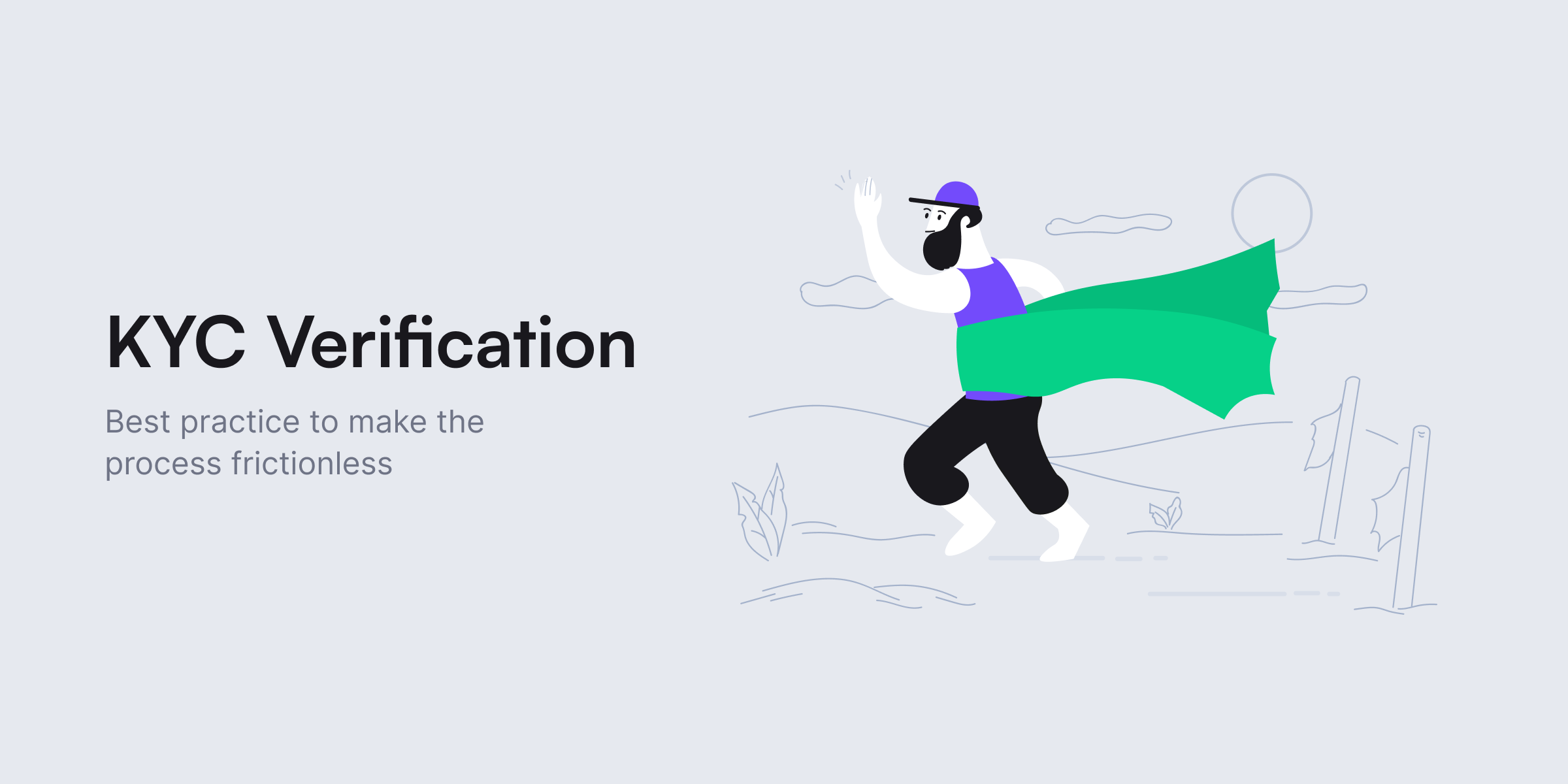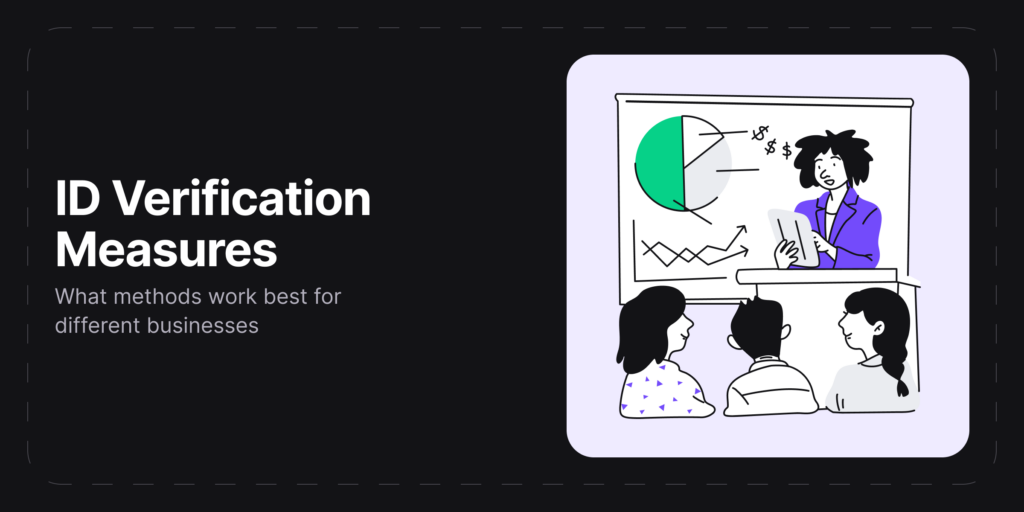Surprisingly, while we live in 2024, banks and financial institutions continue spending millions of dollars every year to onboard and maintain their customers. Recent data reveals that over 1,000 C-level executives across various banks found that, on average, over 50% of them are spending up to 3,000 to complete just one customer KYC check, which is insane, considering how slow some of their internal onboarding processes are.
Let’s not also forget ongoing conflicts between compliance and different risk management approaches or the pace of regulatory changes. Additionally, the mass adoption of artificial intelligence and innovations like ChatGPT don’t help businesses in terms of fraud. Let’s be real. It’s now easier to pre-record a video and bypass KYC verification, especially if the liveness detection software is far from superb.
But everything might just seem black or white from a distance. We’re jumping right into the gray side, exploring the benefits of KYC verification checks and spilling the main tactics on how businesses can actually improve their identity verification processes.
Summary
- KYC verification explained
- Industries required to conduct KYC checks
- Emerging KYC verification challenges for businesses
- Recent KYC trends in the market
- Key practices to build a frictionless KYC verification process
What is KYC Verification?
KYC (Know Your Customer) verification is a process that businesses and financial institutions use to verify the identity of their customers to prevent fraud, money laundering, and other illegal activities. It involves collecting and verifying personal information about a customer’s identity, such as their name, address, date of birth, and government-issued identification.
KYC is also an integral part of a larger regulatory framework, which is called Customer Due Diligence (CDD). Part of CDD compliance requires companies to conduct KYC checks. The difference is that CDD goes beyond KYC and involves a more in-depth assessment of a customer’s risk profile and potential involvement in financial crimes.
When is KYC Verification Required?
One of the most popular examples of mandatory KYC verification is in the financial industry. For example, when someone opens a new bank account, the bank will ask for documents like a driver’s license or passport to confirm the customer’s identity.
Another great example would be cryptocurrency platforms, which now often require users to submit identification documents before they’re allowed to trade digital assets. That’s why today, there are no boundaries for KYC verification. It can be implemented in any industry for security reasons.
Other examples of regulated sectors that are required to conduct KYC verification:
- Art marketplaces
- Travel businesses
- Real estate brokers
- Insurance companies
- Gaming and gambling operators
- Non-profit organizations
- Adult entertainment sites
- Legal service providers
- Healthcare platforms
In simple terms, a mandatory KYC check means that you have to ask new customers to show you their ID, age, and where they live. They can give you these papers in different ways, like a printed copy or a scanned image. You also need to check if these papers are real, which is a bit trickier when it’s done online instead of in person.
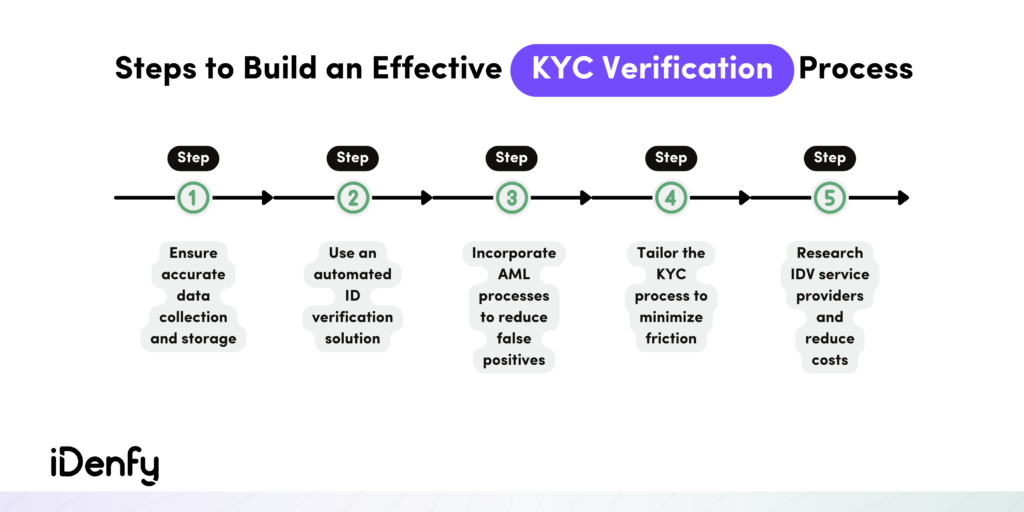
Top Challenges Related to KYC Verification
KYC verification is far from a new concept and has been a critical part of the customer lifecycle. Since everyone wants to save costs and generate more revenue, the demand for automated KYC compliance software providers has been rising over the past decade. As a result, more companies and financial institutions are searching for ways to streamline their customer onboarding process and improve their much-needed efficiency levels.
The top challenges regarding KYC verification today include:
- Costly operations. Performing KYC checks for every single user might be expensive, especially for small enterprises that don’t have entire in-house compliance teams.
- Questionable user experience. If not done right, KYC checks can add unnecessary friction, especially if low-risk users are asked to repeat the KYC process over and over again.
- Insufficient level of fraud prevention. Some KYC systems aren’t fraud-proof, especially now that criminals are using advanced technology to bypass verification procedures.
And the classic — keeping up with constantly evolving and complex regulatory requirements across different jurisdictions can be challenging. Businesses must ensure that their KYC verification processes also align with Anti-Money Laundering (AML) regulations.
On top of that, compliance professionals have their own challenges. For example, the lack of automated KYC verification methods, outdated systems, and exchanging documents and customer data via email is one of their many concerns. A recent survey showed alarming numbers: out of 240 compliance officers from various industries, countries, and job levels, 53% of them feel they don’t have sufficient resources to fully perform their roles, 40% lack support from their organizations, and 59% are experiencing burnout.
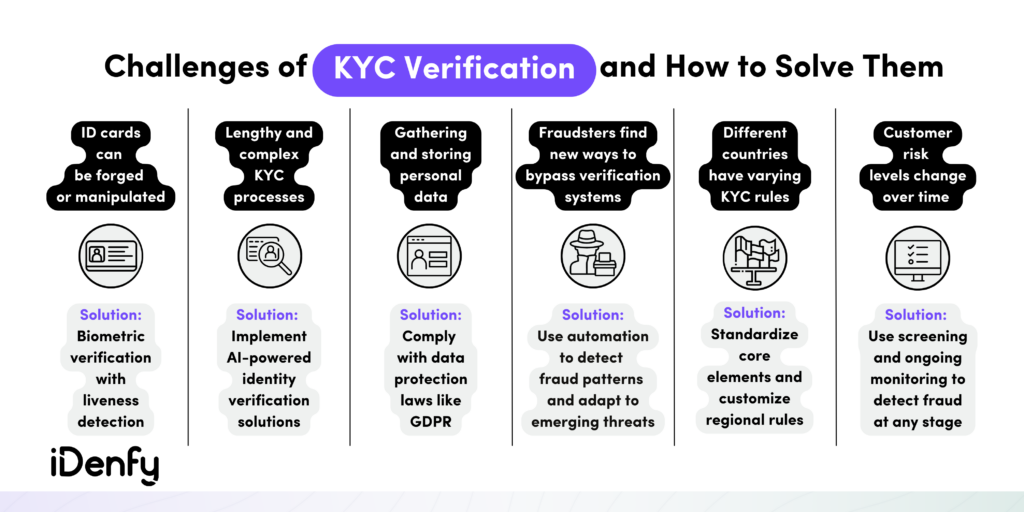
Recent Trends and Updates in KYC Verification
Once again, the king and queen of technology — artificial intelligence and machine learning — are flooding the KYC market for the better good. Their algorithms can scan extensive volumes of data, leading to more precise fraud detection and quicker analysis of alerts, allowing them to say buh-bye to many manual operations.
Apart from AI and its popularity, other trends have shown prospects for KYC verification, including:
- Stricter data privacy regulations. With the EU presenting new frameworks that will aim to regulate AI, the topic of data privacy has become the starting point for many companies. It’s likely that regulators will continue to create stricter rules to ensure that KYC data is strictly protected and used for its intended purpose.
- Continued expansion of KYC verification in more industries. KYC regulations are expanding their horizons into additional sectors, including real estate or virtual asset exchanges.
- Adoption of document-free verification. More businesses transfer their operations online automatically, requiring remote KYC verification solutions. At the same time, some governments are already approving official digital identity legislation.
- Environment, social, and governance (ESG) compliance practices. This involves regularly assessing and improving a company’s performance in these areas to ensure long-term sustainability and responsible business practices. Ongoing compliance not only with KYC but also ESG principles demonstrates a company’s dedication to ethical behavior, which positively impacts its reputation.
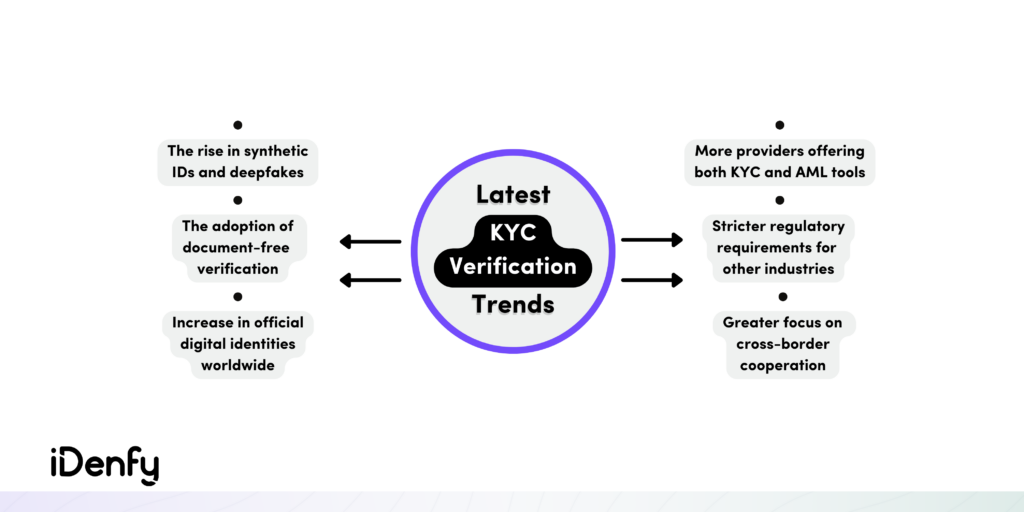
Tips to Make Your KYC Verification Frictionless
To ensure a smooth KYC verification process, businesses should follow the main AML program guidelines: educate employees about the significance of KYC compliance (1), select and implement special tools to enhance the efficiency and precision of the KYC process (2), and conduct periodic audits of the KYC compliance program to find opportunities for enhancement.
That’s why there’s always room for enhancing your identity verification process while making it frictionless. Of course, this also leads to the obligation to ensure compliance, security, and a seamless user experience.
Below, we explain other tips and best practices to achieve this:
Integrate Automated KYC Verification Tools
Automation can play a pivotal role in enabling businesses to cut down on expenses, expedite the onboarding process, and enhance precision. By integrating automated KYC verification, you can enable customers to complete the KYC process online through a user-friendly interface.
Automated KYC verification solutions carry these features:
- OCR and Document Verification. Implement Optical Character Recognition (OCR) technology to automatically extract data from uploaded documents. Use document verification tools to ensure the authenticity of documents.
- Biometric Verification. Integrate biometric solutions like facial recognition or fingerprint scanning for added security and accuracy.
- Data Analytics and AI. Use artificial intelligence and machine learning algorithms to analyze user behavior and detect patterns that could indicate fraudulent activity.
It’s also important to use a KYC solution that provides clear instructions and guidance, allowing users to submit required documents and information at their convenience. That’s why you should always implement an intuitive self-service platform to reduce the need for manual intervention. The golden rule of KYC is not to overdo it. In cases of simplified due diligence (SDD), request only essential documents and information. Minimize the number of documents required and focus on collecting key data relevant to identity verification and risk assessment.
Focus on Building a User-First ID Verification Workflow
Enhancing your complete KYC experience hinges on selecting a verification solution that effectively combats fraudulent activities, all while ensuring that your compliance procedures remain minimally intrusive and lightweight. Consider integrating with third-party identity verification and KYC service providers. These services often have advanced technologies and databases that can streamline and enhance the verification process.
Make sure your identity verification process is:
- Optimized for mobile devices. Many users access services through smartphones, so ensuring a smooth mobile experience is essential for reducing friction.
- In compliance with the latest regulations. Don’t forget to update your KYC process based on user feedback and industry developments. Regularly test and refine the process to ensure it remains efficient and user-friendly.
- Tested and constantly monitored. You can perform A/B testing to identify areas of improvement in the KYC process. Try out different user flows and design elements to optimize the user experience and conversion rates.
So, whenever possible, perform real-time verification checks. This minimizes friction and allows legitimate customers to access your services promptly. Choose a KYC software that handles custom workflows without requesting additional input from your customers. Achieve this by examining their features and setup offerings, analyzing their digital traces via phone number verification, and assessing IP address patterns or similar data points. Don’t forget to offer multiple channels for submitting documents and completing the KYC process. This could include web, mobile apps, email, or, sometimes, physical locations for in-person verification.
Look for Cost-Effective and Customizable KYC Verification Tools
Now that we’ve covered the basics, it all comes down to costs and user experience. While KYC verification is mandatory, the main focus should be shifted towards building a seamless identity verification process for your users. This becomes especially important for businesses that want a long-term solution and plan to scale.
Yes, nobody wants to talk about the risk that comes with the considerable loss incurred from potential customers abandoning their applications due to friction in the KYC process. In the same way, no one wants to put all of their resources into compliance operations. At iDenfy, we offer both KYC verification and AML/KYB solutions under one platform where you don’t need to pay for 1) unfinished verifications and 2) failed verifications.
See our success stories and try out our fraud prevention solutions for free today.
